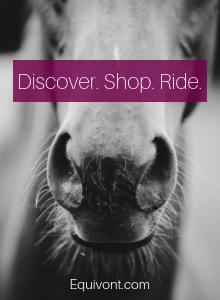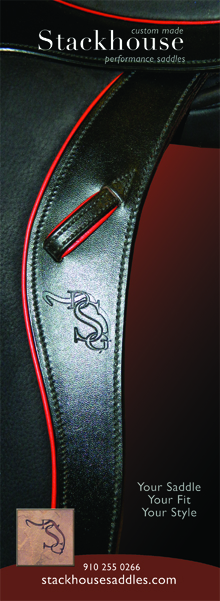Search the Site
Principles of Horse Training (Current Freebie!)

Horses are the most amazing creatures....... from their awesome athletic abilities, to their regal spirit, to their generosity and desire to please us humans, to their fascinating powers of perception.
I feel like we owe it to them to carefully consider what we do with them on a daily basis. To make sure that our every interaction with them is fair and consistent, whether riding or handling on the ground. Here are a few key principles to follow:
1. Be precise and consistent with aids, expectations, and feedback.
Make sure you know exactly what you do to ask for any given task. Since horses are SO good at noticing minuscule differences in rider or handler aids, they can easily become confused or upset if the aids for any particular exercise are inconsistent. Whether we are talking about the aids for turn on the forehand, picking up the right lead canter, or even something like picking out their feet while in the cross ties, they will be so much more confident if asked in the same way every time.
Riders need to have a very clear idea of what their expectations are for every aid they apply. For example, you must decide that you want your horse to be highly responsive to your light leg aids, and go forward immediately when you apply them. If you haven't made that decision, then it's not as likely to happen. This sounds like a pretty obvious thing to say, but I find that many riders instead let the horse make the decisions! If the horse doesn't go forward when the rider uses a light leg aid, they use a strong one. And the horse trains the rider to do a lot of work, always pushing and driving to attempt to maintain forward energy in the horse. In this case, the rider needs to make a decision that from now on the horse will respond to light leg aids. And then make sure that happens by giving clear, consistent feedback to the horse.
Immediate, accurate feedback is necessary for a horse to learn if what it is doing is right. The timing is absolutely crucial, as there is a window of only a few seconds for the horse to make a clear connection between it's behavior and the feedback that the rider provides. How many times have you seen a rider jump a jump, and the rider canters away, gradually stops, and then a full 30 seconds later pets their horse? Think about the timing of that reward. In that scenario, the horse thinks the reward is for the act of stopping, not jumping the jump. To make it clear the reward is for jumping the jump, the rider needs to reward immediately upon landing from the jump.
To go back to the horse that needs to be more responsive to light leg aids, if the rider just keeps pushing and driving (nagging behavior) the horse is getting NO feedback. The aid is just on over and over again, which desensitizes the horse to that aid.
If instead, the rider gives the horse that doesn't respond to the light leg aid the immediate feedback of a tap with the whip, he will understand that you are telling him that his response to the leg aid was not right. If he then jumps forward from the whip, and you reward and relax your leg aid, he now has immediate positive feedback. This makes it very clear to the horse what is right and what is wrong.
Every single response from an rider's aid should have immediate feedback, whether positive or negative. Negative feedback does not mean being brutal, rather making a quick correction with no emotion. There is no place for emotion in the training of a horse. Positive feedback can be any type of reward. The horse's favorite reward is that the aid goes away when they do the right thing. And that the rider simply "allows" the horse to do what he was just asked to do.
When teaching I tell riders to "ask, insist, reward", rather than the "ask, ask, ask" that I see riders so often do. Or "say it, mean it, and then shut up" rather then ineffective nagging.
2. Train progressively and systematically, but treat each horse as an individual.
You are setting yourself up for success if you train in a progressive manner. When teaching a child to read, they are first taught the alphabet, then words, then sentences, then paragraphs, and so on. Asking a green horse to bend on a circle without first teaching him to move away from lateral pressure is like asking a child to form words when they don't know the alphabet. Yet I see it happen all of the time.
Or attempting to perform half halts, when the horse doesn't yet understand or respond to the leg, seat, and rein aids by themselves. That is setting the horse up for failure, as there is no chance it will know what the combination of those aids mean, when it doesn't yet know what the individual aids mean. The rider will feel that failure in the form of resistance.
Systematic, progressive training is like stacking one building block squarely on top of another, to eventually build a strong, solid building. Teach lateral work in the proper order - turn on the forehand, leg yield, shoulder in, haunches in, and half pass. Let the horse find confidence and balance over single jumps and simple gymnastics before attempting courses. Make sure that the horse is comfortable jumping a tiny or simulated ditch, and then a real ditch, before attempting a trakehner jump. Done this way, you have a solid foundation, and can simply "go back a step" if you run into difficulties.
Setting yourself up for success involves things like jumping that spooky jump towards home or towards the horse's friends the first time. Or having a very green horse follow a more experienced horse into water or over a ditch for the very first time. Before it decides its afraid of the ditch or water, and refuses to go. Making it's first attempt a "non event". Or asking for canter only in corners until the horse is confirmed with it's canter leads.
It is also very important to treat each horse, and each situation, individually. One horse might refuse to go in a trailer, and be truly afraid. While another may just stand stubbornly but unafraid, at the end of the ramp. The first horse needs time, patience, and encouragement. While the second horse needs some strong corrections. Very sensitive horses need their riders and handlers to be gentle and quiet with every move, and usually dislike loud rewards and the hard patting that more stoic horses don't mind.
To be the most successful when dealing with horses, you need to be a fair, calm, and confident "herd leader" to them, whether in the saddle or on the ground.
And remember, every second you are interacting with your horse (whether as rider or handler), you are training him or her. So be mindful of every aid, every response the horse gives you, and your immediate feedback to every response.






